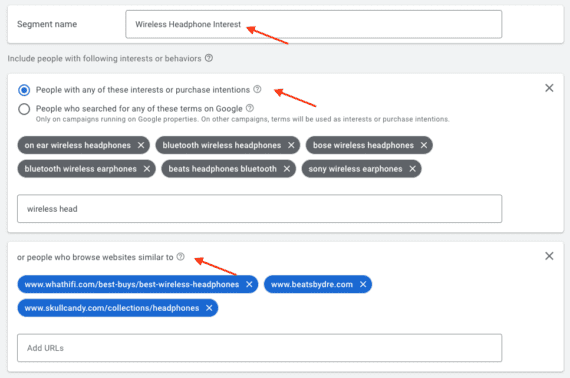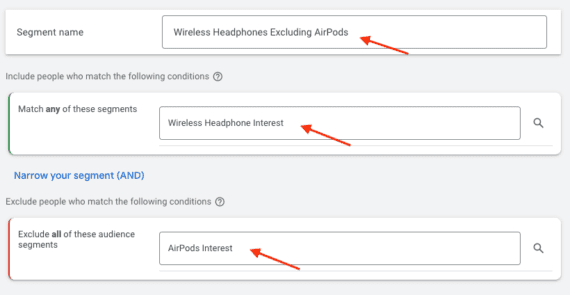Google ads continue to move their focus from keywords to campaign types, such as performance performance Max and Gen Demand, making the audience more critical than ever. Google has improved its ability to target audiences in the display campaigns to remind the abilities of meta, LinkedIn and other social channels.
Own audience
Search and shopping campaigns take advertisers only. Display campaigns can help building views on the tip through their own audience.
“Custom audience” is any group of consumers chosen by advertiser, for example:
- Visitors to the Page-US Page that do not translate,
- Subscribers E -mail newsletter,
- Searchers with specific needs such as questions for “electricity services” or “wireless headphones”.
- Shoppers who go through the category of websites such as those similar to ESPN,
- Search engines who ask the terms “wireless headsets” but do not pass similar ESPN sites.
Depending on the type of Google campaign, it targets or use it as a signal. For example, the display campaign would target the prospects of “electricity services” for the audience on the market. The Performance MAX campaign would use “electricity services” as a signal and showed advertisements for prospects derived by Google.
The audience is unlimited, so advertisers should constantly test to identify the best artists.
Creating your own audience
The most common audience is visitors to the website – individual pages or combinations. For example, there are visitors to the product site that did not overcome. They looked at the URL “// Products”, but not “thank you”.
This own audience is visitors who viewed the URL “// products”, but not “/thanks”. Click the image to enlarge.
Yet the targeting is more creative with custom segmentsWhich, like the audience on the website, is located in the audience manager. There are two types of own segments:
- “People with any of these interests or shopping plans,”
- “People looking for any of these conditions on Google.”
Options are similar, but “interests” include web pages visited, used applications, and consumed content versus search engines that ask specific conditions. So “interests” are macro targeting, while searching is micro.
Here is a segment of your own interest for wireless headphones. I included several conditions and sites that visit the prospects.

This segment of one’s own interest includes conditions for headphones and related websites. Click the image to enlarge.
I could narrow the segment exclusion Viewpoints that are interested in Apple AirPods. Then I could create a separate “AirPod” segment and even combine them for a new segment.

Segments may exclude other segments or interests. This example excludes prospects that are interested in AirPods. Click the image to enlarge.
Combined segments may include “interests and detailed demographic data”, not only other own segments. Therefore, I could add users of headphones defined by Google to my combined segment.

Combined segments may include “interests and detailed demographic data”, not only other own segments. Click the image to enlarge.
The result is a seemingly endless potential audience, general and specific, to test across campaign types. Maybe one custom segment works better as a maximum power signal than as a destination on the display.
Be creative! That’s the way with you. Google ads may not be as granulated as meta or linkedIn, but it is necessary to scalance your account.

